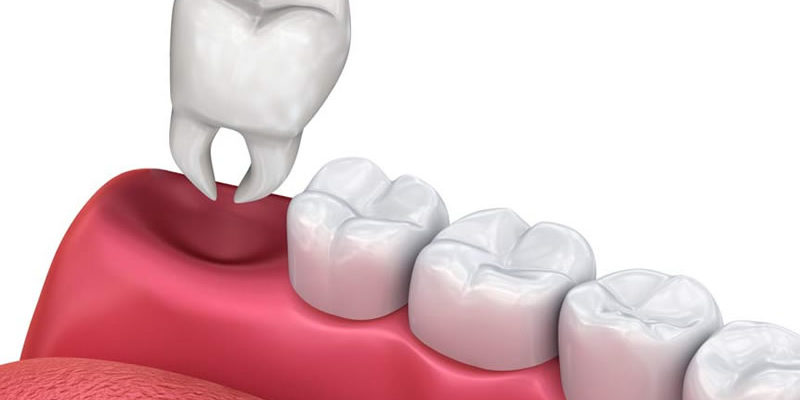Wisdom teeth are a set of molars that typically appear in your jaw when you’re between the age of 17 and 21 years old. Long, long ago, when human beings ate a lot of raw meat, roots, and vegetables, they would require a third set of molars in early adulthood. As human beings have evolved, though, the need for this third set of molars has disappeared. The change in our diets and the elimination of some of our historical hunting habits has made wisdom teeth unnecessary.
Our diets and hunting habits aren’t the only things that have changed over millennia. So too has the size of our jawbones. Today, our jawbones are smaller than they were in human beings millennia ago. That gradual shrinking of our jawbones has one serious consequence. Not only do we not need wisdom teeth anymore, there just isn’t usually enough room in our jaws for them anyway. That lack of extra space in your jaw means that wisdom teeth often come in crooked or twist and shift teeth already present in the jaw. In some cases, wisdom teeth don’t erupt at all but get stuck underneath other teeth in whole or in part.
Because of the potential consequences of unnecessary wisdom teeth emerging into a jaw already full of permanent teeth, the dentists at Jagare Ridge Dental recommend wisdom tooth removal in South Edmonton on a preventative basis. Since you don’t need them and they’re likely to cause problems, the thinking is, why not remove them?
There are four types of problems that can arise with the emergence of wisdom teeth. All of these are reasons that your dentist in South Edmonton often recommends preventative dental extractions near you.
To avoid impacted wisdom teeth
A wisdom tooth is “impacted” when it gets stuck under your gums with the result that it erupts at an unusual angle or only partially because it can’t break completely through your gums. When a wisdom tooth does get impacted, it can cause bleeding and tender gums; pain in your jaw; a swollen and stiff jaw; bad breath; and problems opening your jaw.
To avoid overcrowding of your teeth
In a jaw that already contains 28 teeth, there sometimes isn’t room for four more in the form of wisdom teeth. When overcrowding up the arrival of wisdom teeth pushes other teeth out of alignment, those crooked teeth can’t be straightened with braces or Invisalign. Teeth will have to be extracted.
To avoid sinus problems
The growth of your wisdom teeth in the upper jaw can interfere with the sinuses in the upper part of your face. Interference with sinuses by wisdom teeth is not a common problem, but a potentially serious one that can cause sinus pain, sinus pressure, congestion, and headaches. Having wisdom teeth extracted before they cause problems can eliminate these potential issues.
To reduce the risk of cavities and gum disease
The overcrowding of your teeth upon the eruption of wisdom teeth can, due to dislocation and twisting, create all kinds of nooks and crannies where food particles and bacteria can accumulate and linger beyond the reach of tooth brushing and flossing. That inability to keep the teeth at the rear of your mouth clean through daily oral hygiene habits can result in advanced tooth decay and gum disease that can spread beyond your wisdom teeth.
Wisdom tooth extractions in South Edmonton are an invasive procedure, it’s true. Nevertheless, it is one that is regularly recommended by a dentist near you to eliminate the risks of all of these problems without any loss of any important teeth. For a careful review of your oral health and to develop a treatment plan for your wisdom tooth extractions in South Edmonton, you should consult with a dentist in South Edmonton when you’re between the age of 16 and 19. The longer you wait, the harder the procedure will become. When is the ideal time to have wisdom teeth extracted? Before any of these problems arise.
